Key Takeaways:
- Trekking poles can be adapted for skiing, but they may not offer the same performance as dedicated ski poles.
- Adjustability, durability, and the presence of baskets are key factors to consider when using trekking poles for skiing.
- Using trekking poles for skiing can be a cost-effective solution for occasional skiers or those who enjoy both hiking and skiing.
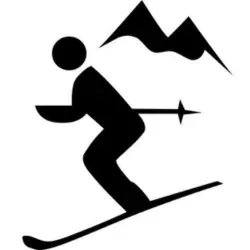
Trekking poles and ski poles are both essential gear for outdoor enthusiasts, each designed to provide support and balance in their respective activities. But can you use trekking poles for skiing? This question often arises among those who enjoy both hiking and skiing and are looking to maximize the utility of their equipment. In this article, we'll explore the feasibility of using trekking poles as skiing poles and the considerations you should keep in mind.
The Similarities and Differences Between Trekking and Skiing Poles
At first glance, trekking poles and skiing poles might seem interchangeable. Both are long, slender rods that you hold in your hands to help maintain balance. However, there are some critical differences. Ski poles, typically, are designed with a specific pole length to accommodate the dynamics of downhill skiing. They have larger baskets to prevent sinking into the snow and are made of materials that can withstand the cold temperatures and impacts associated with skiing.
On the other hand, trekking poles, also known as hiking poles or walking sticks, are often lighter and more versatile. They usually feature adjustability for different trail conditions and may have interchangeable tips for various surfaces. The adjustability is a fine feature for hiking, where the terrain can vary significantly, but it may not provide the same level of stability needed for skiing.
Trekking poles and ski poles, while similar in appearance, serve different purposes and offer unique benefits. Two trekking poles provide stability and balance when hiking over varied terrain, reducing the impact on your knees and other joints. They engage your upper body, promoting a full-body workout and making your hike more efficient. Additionally, they often have features like adjustable lengths and removable baskets, making them versatile tools that can even be used as tent poles in a pinch. On the other hand, ski poles are primarily used for skiing to help with balance, timing, and rhythm.
They also assist in propelling skiers forward, particularly in flat areas. Unlike trekking poles, they don't usually have adjustable lengths or the versatility to be used as tent poles. Ski poles are typically sturdier, designed to endure the harsh winter conditions and the high speeds of skiing. In summary, while both types of poles aid in balance and movement, trekking poles offer more versatility and upper body engagement, making them ideal for hiking, while ski poles are specifically tailored for the demands of skiing.
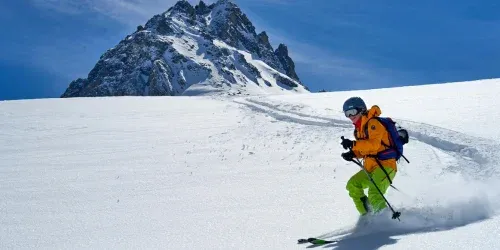
Can Trekking Poles Be Used for Skiing?
The short answer is yes, you can use trekking poles for skiing, but with some caveats. The adjustability of trekking poles can be an advantage, allowing you to change the pole length to suit the slope angle. However, the locking mechanisms on trekking poles may not be as robust as those on ski poles, which could lead to safety concerns if they collapse under the weight and force of skiing.
Additionally, the baskets on trekking poles are typically smaller than those on skiing poles. While they might be sufficient for light snow, they may not provide enough surface area to prevent the poles from sinking into deeper snow, which can affect balance and power transfer during skiing.
The Role of Baskets and Tips in Skiing
Baskets are an essential component of skiing poles. They serve to protect the poles from sinking too deeply into the snow, which is crucial for maintaining balance and support while skiing. Trekking poles often come with smaller baskets, but for skiing, you would need to attach larger baskets to prevent the poles from slipping through the snow.
The tips of the poles are another critical aspect. Skiing poles typically have carbide tips that are designed to grip ice and packed snow. Trekking poles may come with rubber tips for protection on rock or pavement, but for skiing, you would need to ensure that the poles have carbide tips to provide the necessary traction on icy surfaces.
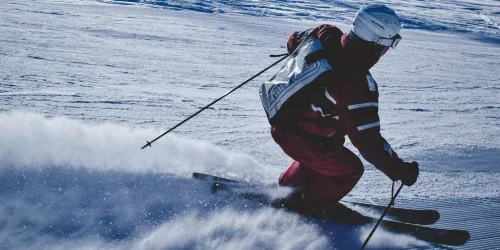
Incorporating Trekking Poles into Your Backpacking Gear
For avid backpackers, the idea of carrying one less item is always appealing. This is where the versatility of two trekking poles can shine. Not only do they provide stability and support for your upper body while traversing through challenging trails, but they can also double as supports for certain ultralight camping shelters. This dual functionality can save space and weight in your backpack, allowing you to move more freely and reduce the strain on your back.
Incorporating trekking poles into your backpacking gear requires a bit of creativity and planning. Some ultralight tents are specifically designed to use trekking poles as their main structure, eliminating the need for traditional tent poles. This can be a game-changer for hikers looking to minimize their load. When selecting trekking poles for this purpose, it's important to measure their length and strength to ensure they can adequately support your shelter. Additionally, watching videos or reading guides on how to properly set up a tent with trekking poles can be incredibly helpful for first-timers.
Adjustability and Durability for Skiing
The adjustability of trekking poles is a double-edged sword when it comes to skiing. On one hand, being able to adjust the length of the poles can accommodate different skiing styles and terrain. On the other hand, the locking mechanisms must be strong enough to withstand the forces of skiing. If a pole collapses during a run, it could lead to a fall and potential injury.
Durability is also a concern. Skiing subjects poles to significant stress, and not all trekking poles are built to endure such conditions. When deciding whether to use trekking poles for skiing, consider the material and construction. Poles made from aluminum or carbon fiber may offer the strength needed, but always check the manufacturer's recommendations to ensure they can handle the demands of skiing.
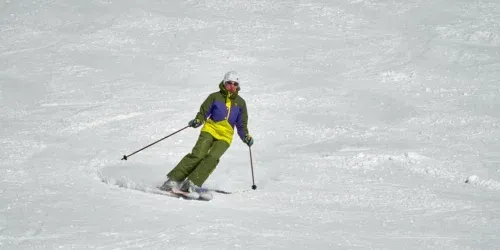
The Benefits of Using Trekking Poles for Skiing
One reason to consider using trekking poles for skiing is the cost savings. If you already own a pair of high-quality trekking poles, you might not want to invest in a separate set of skiing poles. Additionally, using one set of poles for both activities can save space and weight, which is an advantage for those who travel or backpack frequently.
Moreover, if you're an occasional skier or just starting out, trekking poles can provide a sense of familiarity and comfort as you transition to the slopes. The muscle memory and posture you've developed while hiking can translate to skiing, potentially making it easier to learn and enjoy the winter sport.
Practical Considerations for Dual-Use Poles
When using trekking poles for skiing, it's essential to consider the practical aspects. Ensure that the poles have the necessary features to support your skiing style and the conditions you'll face. Check that the poles can accommodate larger baskets and that the tips are suitable for icy terrain. Also, test the locking mechanisms to confirm they can withstand the forces of skiing without collapsing.
Remember that while trekking poles can be adapted for skiing, they may not offer the same performance as dedicated ski poles. If you're an experienced skier or plan to ski regularly, investing in a pair of specialized ski poles might be the better choice for optimal performance and safety.
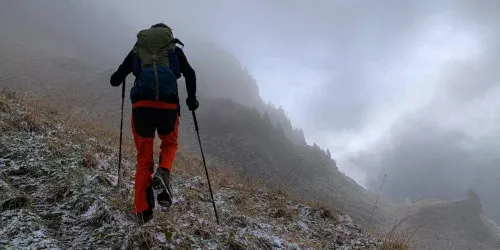
Summary
In conclusion, while trekking poles can be used for skiing, they are not a perfect substitute for dedicated ski poles. The adjustability, durability, and appropriate accessories like baskets and tips are crucial factors to consider. For occasional skiers or those who enjoy both hiking and skiing, using trekking poles on the slopes can be a practical and cost-effective solution. However, for regular or advanced skiers, specialized ski poles are recommended for the best experience and safety on the snow.
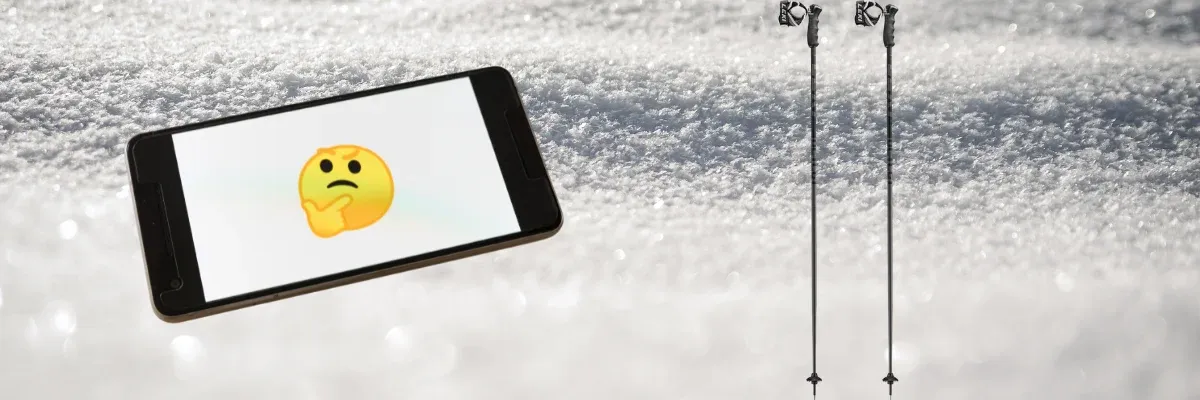
FAQs
Can I use my trekking poles for backcountry skiing?
Yes, trekking poles can be used for backcountry skiing, but ensure they have the necessary features such as larger baskets, carbide tips, and a robust locking mechanism to handle the varied and often more challenging terrain.
How do I adjust my trekking poles for skiing?
To adjust trekking poles for skiing, extend them to the appropriate length for your height and the skiing conditions. The pole should allow your elbow to be at a 90-degree angle when the tip is in the snow. Secure the locking mechanism firmly to prevent the poles from collapsing.
Are there any specific brands of trekking poles that are better suited for skiing?
Some trekking pole brands design their poles with dual-use in mind, featuring stronger materials and more robust locking mechanisms. Look for poles marketed as suitable for both hiking and skiing, and always check customer reviews and manufacturer specifications before using them on the slopes.









